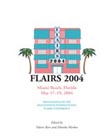Published:
May 2004
Proceedings:
Proceedings of the Seventeenth International Florida Artificial Intelligence Research Society Conference (FLAIRS 2004)
Volume
Issue:
Proceedings of the Seventeenth International Florida Artificial Intelligence Research Society Conference (FLAIRS 2004)
Track:
All Papers
Downloads:
Abstract:
Computational modeling of the human visual system is of current interest to developers of artificial vision systems, primarily because a biologically-inspired model can offer solutions to otherwise intractable image understanding problems. The purpose of this study is to present a biologically-inspired model of selective perception that augments a stimulus-driven approach with a high-level algorithm that takes into account particularly informative regions in the scene. The representation is compact and given in the form of a topographic map of relative perceptual conspicuity values. Other recent attempts at compact scene representation consider only low-level information that codes salient features such as color, edge, and luminance values. The previous attempts do not correlate well with subjects’ fixation locations during viewing of complex images or natural scenes. This study uses high-level information in the form of figure/ground segmentation, potential object detection, and task-specific location bias. The results correlate well with the fixation densities of human viewers of natural scenes, and can be used as a pre-processing module for image understanding or intelligent surveillance applications.

FLAIRS
Proceedings of the Seventeenth International Florida Artificial Intelligence Research Society Conference (FLAIRS 2004)
ISBN 978-1-57735-201-3
Published by The AAAI Press, Menlo Park, California.
